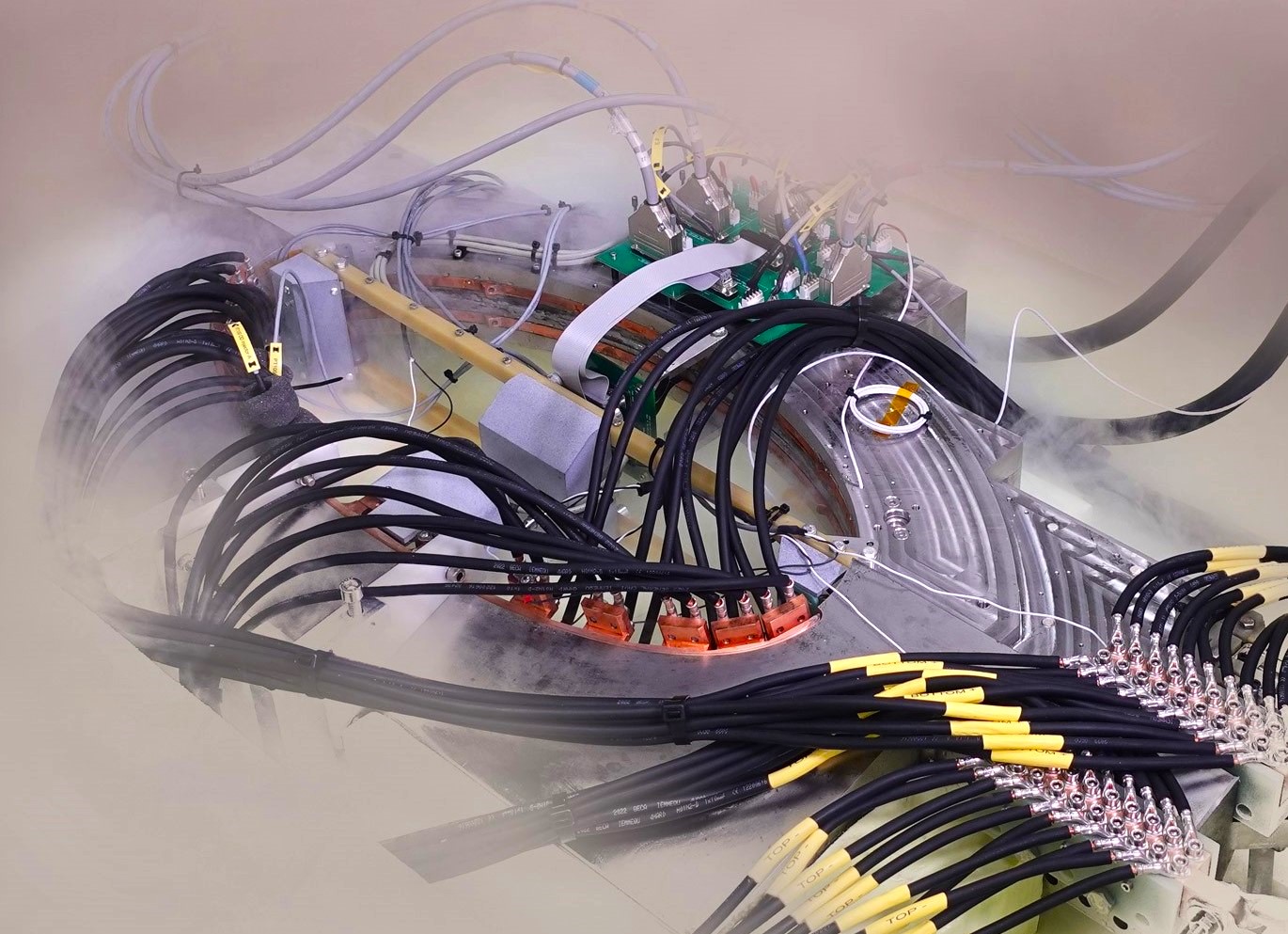Tokamak Energy’s Fusion Magnet System Passes Cryogenic Tests
 UK-based Tokamak Energy’s superconducting magnet system, which is being built to replicate fusion energy power plant forces, has passed significant milestone cryogenic tests. Creating fusion energy requires strong magnetic fields to confine and control the extremely hot hydrogen fuel, which becomes a plasma several times hotter than the center of the sun.
UK-based Tokamak Energy’s superconducting magnet system, which is being built to replicate fusion energy power plant forces, has passed significant milestone cryogenic tests. Creating fusion energy requires strong magnetic fields to confine and control the extremely hot hydrogen fuel, which becomes a plasma several times hotter than the center of the sun.
In a major achievement, Tokamak Energy engineers working on its Demo4 system have validated electromagnetic current test results on the first of 14 toroidal field (TF) limbs in liquid nitrogen. The engineers evaluated the performance of the superconducting TF limb at -200 degrees Celsius, which included examining the resistance of the joints required to pass the operational current between coils. Demo4 will be a complete balanced set of magnets shaped in a tokamak configuration with 12m amps of electricity running through its central column when fully assembled.
Demo4 will consist of 44 individual magnetic coils using 38 kilometers of 12mm wide high temperature superconducting (HTS) tape, which carries currents with zero electrical resistance and requires five times less cooling power than traditional superconducting materials. A TF limb consists of two coils being joined, resin moulded, and embedded into a structural steel ‘clam shell’.
The system will operate in a vacuum at an extremely low temperature of -253 C – 20 degrees above absolute zero – achieved by 10 closed-cycle cryocoolers. It will also demonstrate the potential of HTS magnets for other important applications. Strong magnetic fields are generated by passing large electrical currents through arrays of electromagnet coils that will surround the plasma in future power plants. The magnets were wound with precision from state-of-the-art HTS tapes, which are multi-layered conductors with a crucial internal coating of ‘rare earth barium copper oxide’ (REBCO) superconducting material.
Tokamak Energy’s Magnet Development Manager Dr Rod Bateman: “These first set of extremely positive results are a major step forward for the Demo4 project, which will allow us to create substantial magnetic forces and test them in fusion power plant-relevant scenarios for the first time.”
He added: “A magnet system of this kind has never been built before so for the first toroidal field limb to perform as we expected under rigorous cryogenic electromagnetic current testing is a huge achievement. We now move forward to the next stage with great confidence in our manufacturing process on the path to delivering clean, secure and affordable fusion power in the 2030s.” Final Demo4 assembly and testing at Tokamak Energy’s headquarters in Milton Park, near Oxford, will take place in 2024.
In February Tokamak Energy announced that it had built the first set of new generation high temperature superconducting (HTS) magnets to be assembled and tested in fusion power plant-relevant scenarios. In 2022, Tokamak Energy achieved a world-first by reaching a plasma temperature of 100m degrees Celsius in its ST40 spherical tokamak. This is the threshold required for commercial fusion energy and the highest temperature ever achieved in a privately funded spherical tokamak.
Although most radiation from high-energy plasma neutrons will be absorbed by the tokamak’s shielding, the magnets must be able to withstand secondary gamma rays. Tokamak Energy, therefore, built and commissioned a specialist gamma radiation cryostat system – a vacuum device to provide thermal insulation for the magnets. This test system, at Tokamak’s headquarters in Oxfordshire is being disassembled, shipped, and will be rebuilt at the Gamma Irradiation Facility (GIF) based at the US Department of Energy’s (DOE’s) Sandia National Laboratories (SNL) in Albuquerque, New Mexico.
Tokamak says its aim is to have commercial fusion power plants deployed in the 2030s.
Image: Demo4 limb test in liquid nitrogen. Credit: Tokamak Energy
Source: Nuclear Engineering International


